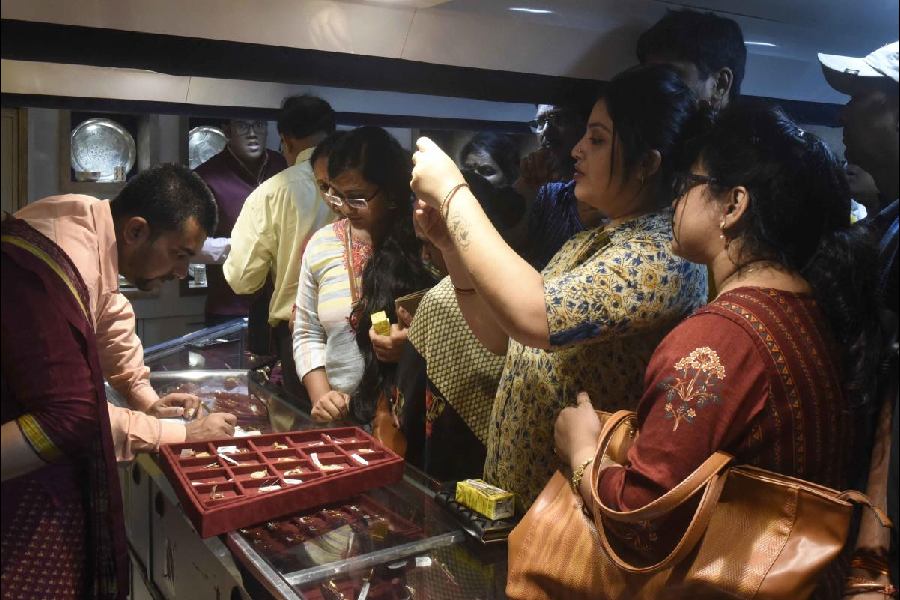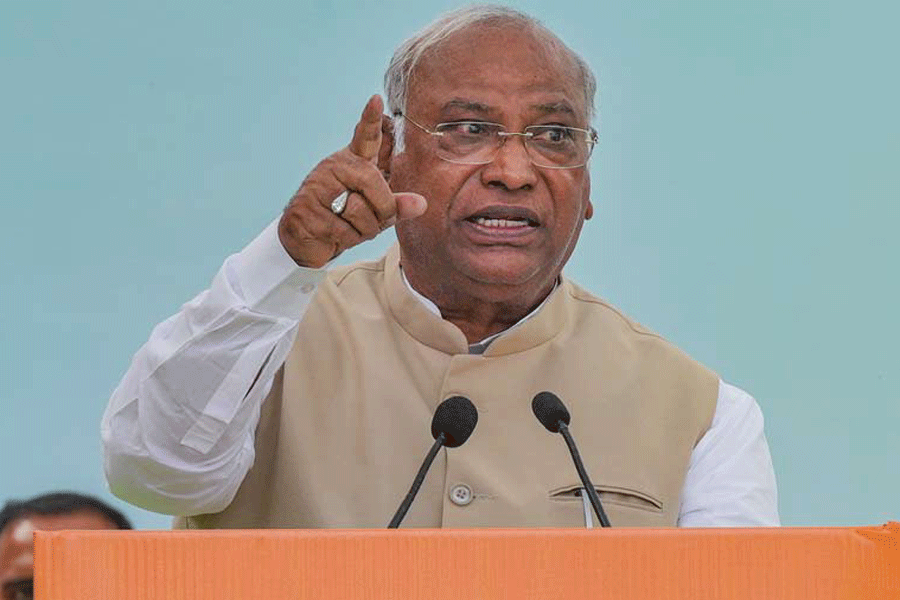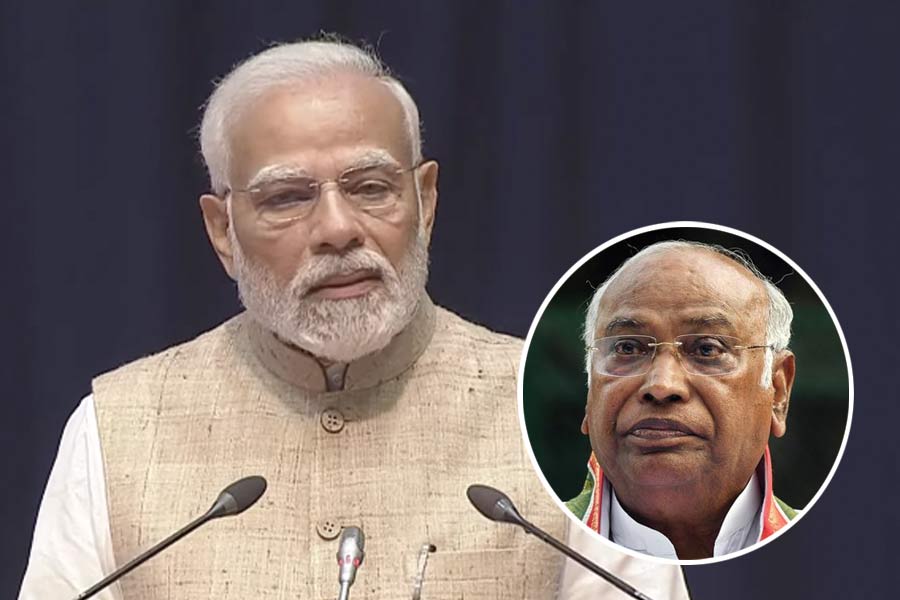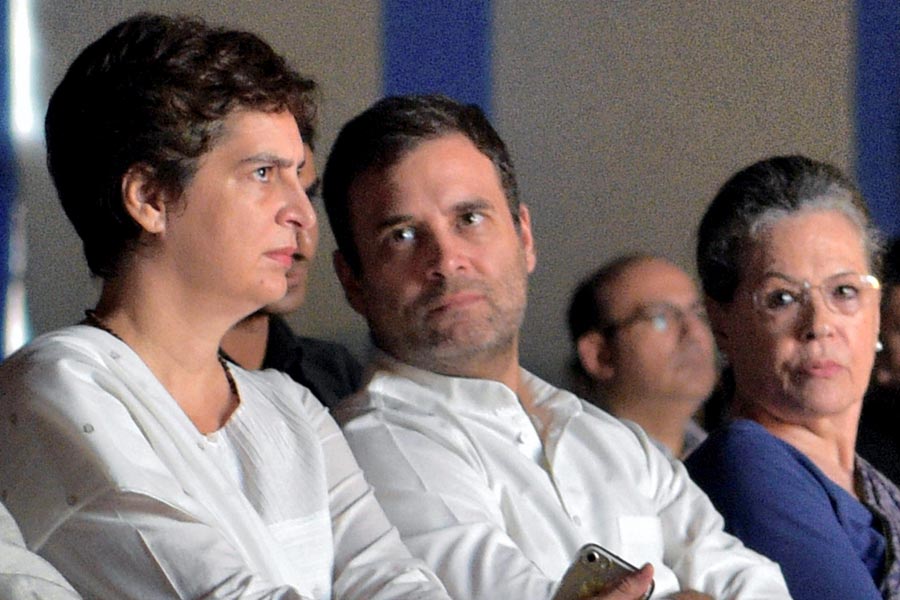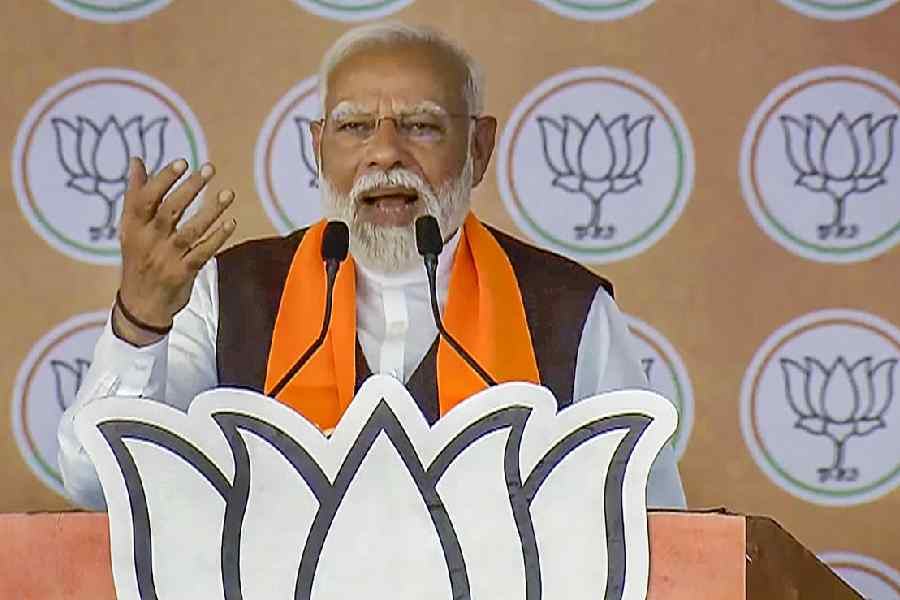The phone lines of city-based bullion traders were buzzing within hours of the Reserve Bank of India announcing the withdrawal of circulation of Rs 2,000 denomination bank notes on late Friday evening.
But the traders and jewellers who had borne the brunt of the income tax authorities during demonetisation are now exercising caution to avoid harassment.
“As soon as the announcement was made yesterday, enquiries started coming in with people asking for bars, coins and biscuits. Even today we are receiving enquiries from customers,” a bullion trader in Bowbazar told The Telegraph requesting anonymity.
The trader explained that last time during demonetisation there was a big rush as Rs 500, and Rs 1,000 denominated bank notes ceased to be a legal tender after midnight.
“We sold gold bars, coins and even jewellery at that time and accepted Rs 500 and Rs 1,000 notes. But the government introduced a 50 per cent tax on unaccounted deposits and we faced difficulties while depositing the amount in banks,” the trader said.
“Even though the RBI has said that deposits to the bank accounts can be made in the usual manner, this time around, I am more cautious. As it is, bullion dealers are today under excessive income tax scrutiny. So, for now we are telling customers that we do not have stock to avoid trouble. Come Monday, I would speak with the bank manager to understand the situation and then take a call,” another city-based bullion trader said.
The RBI has given time till September 30, 2023 to deposit/exchange Rs 2,000 bank notes.
For jewellers, while enquiries have come in on Friday evening and Saturday, there was no immediate rush seen in terms of cash sales.
“There are strict KYC norms applicable on purchase of jewellery exceeding Rs 2 lakh per transaction. So we will do the appropriate KYC and sell jewellery if there is a buyer,” a city-based jeweller said adding that the RBI has given a four and half month window to deposit/exchange Rs 2,000 notes which may not prompt significant rush in terms of jewellery sales, especially with gold ranging at over Rs 60,000 per 10 gram in the city.
During demonetisation there were also instances where gold was sold with 5-15 per cent markup over spot rates. “It is too early to engage in such discussions,” said another jeweller, when asked if there is a similar possibility this time.
Demand push?
The Reserve Bank of India’s (RBI) decision has also led to questions on whether it will push the demand for gold as a few people holding this currency may prefer to buy the yellow metal instead of depositing it in a bank branch.
While experts in Mumbai remain divided, retailers of the precious metal said it is too early to say if members of the public will turn up at their outlets with cash since the RBI has given a sufficient time of four months for the exchange of the notes.
“Senco Gold & Diamonds has witnessed no change in consumer behaviour,’’ sources close to the jewellery retail player said on Saturday.
Given the concerns that there are some people who are hoarding these high value notes, it is felt that they may make discretionary purchases such as gold instead of turning up at the bank branch where deposit of large amounts could catch the attention of the tax authorities.
In 2016, when Prime Minister Narendra Modi announced demonetisation of Rs 500 and Rs 1000 banknotes, it had led to a rush at jewellers with people wanting to convert their cash into gold.
Price point
Market circles said that soon after the RBI announced its decision, gold prices rose in the MCX on expectations that demand for the metal would rise. On Friday, gold future contract for June 5 expiry, closed at Rs 60,390 per 10 gram in the MCX, a rise of Rs 667 or 1.12 per cent over its last finish.
Anuj Gupta, vice-president at IIFL Securities, told The Telegraph that people who have these notes may start converting their currency into physical gold, thereby pushing up its demand. He added that the premium of the metal (to the MCX price) in the physical market or at outlets may rise by Rs 1,500-2,000 from Rs 1,000, particularly for people who would use the Rs 2,000 banknote to purchase the precious metal. However, Hareesh V, head of commodities at Geojit Financial Services feels otherwise.
He pointed out that the RBI’s decision is unlikely to have a major impact on gold demand. This is because, the quantity of Rs 2,000 banknotes that are in circulation is not huge. Moreover, the central bank has given a timeframe of four months for people to convert the currency.

